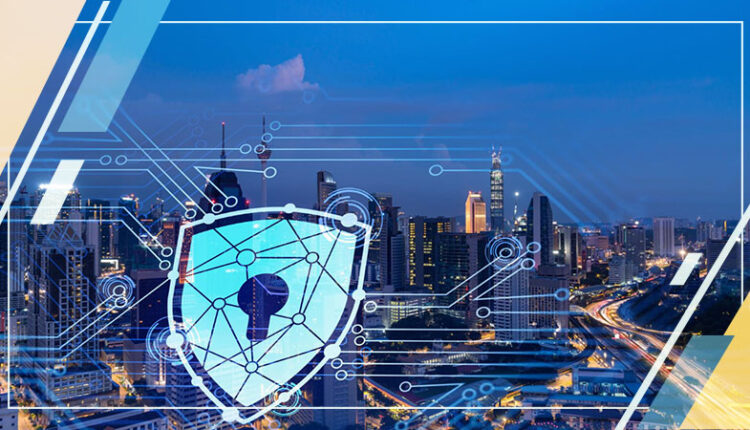The Role of Critical Infrastructure Protection (CIP) in the Digital Age
Infrastructure plays a pivotal role in the development and prosperity of a nation. It serves as the backbone for economic expansion and finding growth opportunities. Ensuring the protection of these vital infrastructures holds great significance for all nations. This is where the concept of critical infrastructure protection (CIP) enters the scene. This efficient process safeguards vital infrastructure while contributing to job creation, national defense, and poverty reduction, making it a cornerstone of a nation’s progress.
So. Let’s delve in and explore more about this essential strategy.
What is Critical Infrastructure Protection (CIP)?
Critical Infrastructure Protection (CIP) refers to the process used to protect a region’s vital infrastructure. It is essential for governments worldwide to ensure the security of critical infrastructure sectors and prioritize disaster preparedness, response, and recovery.
CIP safeguards various critical infrastructures, such as food and agriculture, transportation, energy organizations, and more, against terrorist activities, cyber attacks, and natural disasters. The concept of CIP involves the development of a national capability to identify and monitor critical elements and determine when they are under attack or are vulnerable.
5 Key Benefits of Critical Infrastructure Protection (CIP)
CIP provides a range of advantages to the nation in diverse situations. Take a look at the below-mentioned five major benefits:
● Protection Against Threats
CIP helps organizations prepare for and respond to serious incidents that involve critical infrastructure environments and protect against an ever-growing number of threats, including cyber threats, natural disasters, and terrorist threats.
● National Security and Public Safety
CIP is crucial for national security, public health, safety, and the economy. It ensures that the destruction or incapacitation of critical infrastructure would not harm these vital aspects of a nation.
● Economic Stability
CIP methods and resources deter or mitigate attacks against critical infrastructure. This involves securing components such as Operation Technology (OT), Industrial Control Systems (ICS), and SCADA Systems, which are indispensable for economic stability.
● Efficient and Reliable Supply of Electricity
In the context of the energy industry, American Electric Reliability Corporation Critical Infrastructure Protection (NERC CIP) standards provide a cybersecurity framework. These standards help identify and secure critical assets that can impact the efficient and reliable supply of electricity in North America’s Bulk Electric System (BES).
● Coordination and Information Sharing
CIP programs, such as the Division of Critical Infrastructure Protection (CIP) within the HHS Administration for Strategic Preparedness and Response (ASPR), coordinate activities and provide relevant and timely information related to protecting, mitigating threats, and building resilience in critical infrastructure throughout the area of operations.
Key Strategies for Practical Critical Infrastructure Protection (CIP)
Below are the crucial strategies implemented for the effectiveness of CIP efforts:
● Cybersecurity Measures
Implementing robust cybersecurity measures is crucial for protecting critical infrastructure against cyber threats. This involves securing critical infrastructure, such as SCADA systems and networks, as well as industrial control systems (ICS) and operational technology (OT), against cyber attacks.
● Risk Assessment and Mitigation
Conducting detailed risk assessments and implementing prevention and mitigation actions to counter potential threats is essential. This includes assessing the effectiveness of prevention and mitigation measures through training and tests on the cybersecurity of critical infrastructure to identify existing gaps and plug them with appropriate measures and tools.
● Education and Awareness
Promoting education and awareness supports both policy and strategy formulation and executive leadership development. This includes periodic checks and analysis to enhance preparedness and response capabilities.
● Information Sharing and Collaboration
Establishing effective information-sharing partnerships between industry sectors and the government can significantly contribute to CIP efforts. This can be facilitated through the voluntary creation of Information Sharing and Analysis Centers (ISACs) to gather, analyze, and disseminate cyber threat information.
● Coordination and Integration
Ensuring coordination and integration at both national and organizational levels is crucial for effective CIP. This involves coordinating activities and providing relevant and timely information related to protecting and mitigating threats to critical infrastructure throughout the area of operations.
Role of Critical Infrastructure Protection (CIP) in the Education Sector
CIP plays a vital role in the education sector by ensuring the security and resilience of educational institutions’ critical infrastructure. This includes safeguarding the physical and digital systems that are essential for the functioning of educational facilities. CIP establishes protocols for emergency response and recovery to minimize the impact of disruptive events.
Educational institutions can collaborate with government agencies responsible for CIP to stay informed about potential threats and best practices for protecting critical infrastructure. This collaboration can also involve accessing resources and support for enhancing CIP measures within the education sector.
In Nutshell
Critical Infrastructure Protection (CIP) stands as a paramount strategy for safeguarding vital infrastructure against a multitude of threats, ranging from cyberattacks to natural disasters. It ensures national security, public safety, economic stability, and the efficient functioning of essential services.
By implementing robust cybersecurity measures, CIP serves as a backbone for strengthening the resilience of critical infrastructure. CIP not only conducts risk assessments but also educates about potential treatments. In the future, the CIP will become even more pivotal in mitigating potential risks and ensuring the continuity of essential services for the well-being of societies worldwide.


